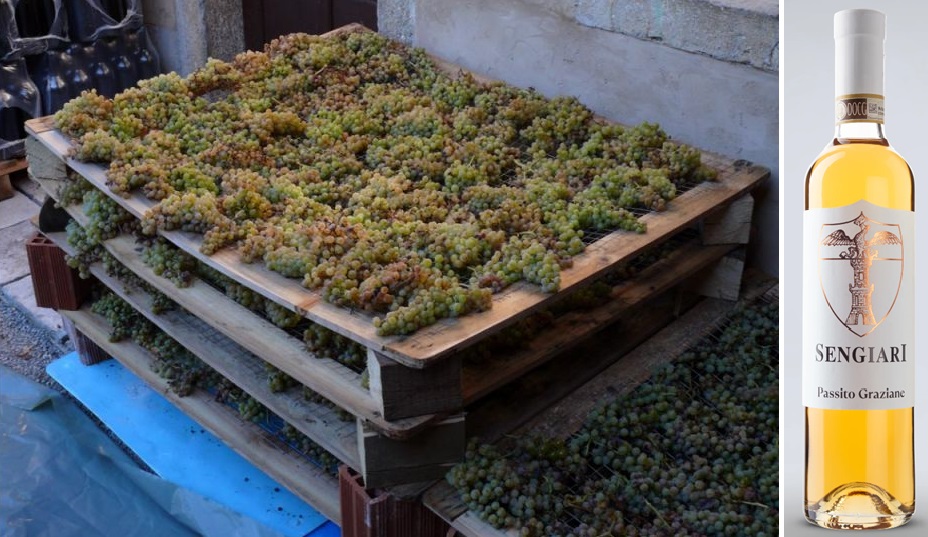Italian term for a sweet wine or dessert wine made from raisined, i.e. usually air-dried or sun-dried grapes. The name is derived from "appassito" (wilt, appassire = wither, appassimento = withering, drying). The practice has an ancient tradition in Italy, as it was already practised in ancient times with the sultana wine Passum. In terms of the drying process of the grapes, passito corresponds to straw wine.

Drying the grapes
There are various methods for drying the grapes. Either the grapes are left on the vine for a very long time or they are dried after the grape harvest. In the latter case, the grapes are hung on racks or spread out flat and loosely on wooden slats, straw or reed mats. The main purpose is to remove water and thus concentrate the sugar and extract content. This increases the potential alcohol content by at least a third.
The grapes are dried for several months from September to January in dry and cool air. This is done under cover with the windows open to prevent rot and mould through air circulation. Drying in the sun is still sometimes used in Sicily or on Greek islands such as Santorini. An accelerated process is also used, in which the grapes are dried in warm air at 30 to 35 °Celsius.
Pressing and fermentation
Once the grapes have shrivelled like sultanas, they are pressed very gently. Red grapes are usually destemmed. Depending on the desired type of wine, fermentation takes place under seal in small wooden barrels with a volume of around 50 litres (Caratelli) or larger containers. It can take several months due to the high sugar content. Some producers interrupt fermentation several times, which means that the process can take two to three years.
Vinification
The wine, which is usually very sweet and golden yellow in colour, has aromas of dried fruit and honey and a relatively high proportion of volatile acids. However, there are not only sweet, but also dry versions, such as the Valpolicella version Amarone. Dried grapes are used in the DOC/DOCG Passito varieties Albana di Romagna, Malvasia delle Lipari, Montefalco Sagrantino and Pantelleria, among others, as well as in many varieties of Vin Santo produced throughout Italy.
Other methods
The process known as Recioto in Veneto is very similar to the production of Passito. However, Passito should not be confused with the Ripasso method, which is also used for Valpolicella. The process known as Taglio del Tralcio in the Chianti region is also used to obtain berries richer in extract.
Further information
For the production of alcoholic beverages, see Champagne (sparkling wines), distillation (distillates), speciality wines, spirits (types), winemaking (wines and wine types) and wine law (wine law issues). All work and tools in the vineyard during the vegetation cycle are listed under vineyard care.
Voices of our members

As honorary chairman of the Domäne Wachau, it is the easiest and quickest way for me to access the wein.plus encyclopaedia when I have questions. The certainty of receiving well-founded and up-to-date information here makes it an indispensable guide.
Hans-Georg Schwarz
Ehrenobmann der Domäne Wachau (Wachau)